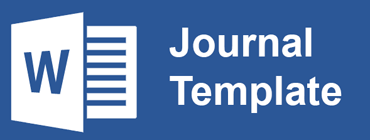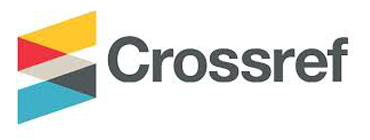THE USE OF INSTAGRAM IN LEARNING TO WRITE RECOUNT TEXT: A CASE STUDY OF THE TENTH GRADE OF MAN 3 MEDAN
Abstract
Mobile-Assisted Language Learning (MALL) has populary known as language teaching approach in the last decades. This present study aimed to investigate students‟ engagements on Instagram and their perceptions of its utilization in learning to write recount text. Qualitative research method in the form of case study was employed to conduct this study. The data were collected by using questionnaire, interview, and observation and later analyzed by using thematic analysis. Thirty-five students of MAN 3 Medan were recruited as the participants of this study while three students voluntarily participated in the interview session employed to further dig their perceptions on the use of Instagram in learning to write recount text. The results revealed that, first; most of the students had already used Instagram for personal purposes before the teacher introduced it to them. Second, the students towards its utilization, 1) in terms of positive perceptions, they found Instagram beneficial in exploring more ideas and imagination, encouraging to write better, improving confidence, acquiring other proficient language skills, and discovering online learning tool; 2) for the negative perceptions, the students found some drawbacks which may or may not related to the application itself, such as internet connection issues, violence of privacy, and focus distraction. From those findings, this study concludes that the use of Instagram in learning to write recount text may provide the students with great experiences, however if it is not well prepared, it may as well give negative learning experiences. This study suggests that with some efforts to minimize technical issues, Instagram can be used as an online language learning tool in English classroom during the pandemic.
Full Text:
PDFReferences
Afifuddin. (2016). An analysis of students‟ error in writing descriptive texts. English Education Journal, 7(1), 130-139.
Anderson, M. & Anderson, K. (2003). Text types in English 2. South Yarra: Macmillan Education Australia.
Anggraeni, C. W. (2017). Students‟ perspectives toward the use of Instagram in writing class.
English Language and Literature International Conference, 1(1), 68-74.
Daulay, S. H. (2019). Language and society. Medan: Lembaga Peduli Pengembangan Pendidikan Indonesia (LPPPI).
Daulay, S. H., Damanik, E. S. D., Rahman, I. D., Wandini, R. R., Reflina, & Anggreni, R. (2020), Sara‟s cooking party game as a media to enrich students‟ English vocabulary. International Journal of Psychosocial Rehabilitation, 24(8), 15249-15256.
Depdiknas. (2006) Kurikulum berbasis kompetensi mata pelajaran bahasa Inggris. Jakarta: Pusat Kurikulum Badan Penelitian dan Pengembangan Departemen Pendidikan.
Douglas, N. K., Scholz, M., Myers, M. A., Rae, S. M., Elmansouri, A., Hall, S. & Border, S. (2019). Reviewing the role of Instagram in education: Can a photo sharing application deliver benefits to medical and dental anatomy education? Medical Science Educator, 29, 1117-1128.
Fithriani, R. (2018). Discrimination behind Nest and Nnest dichotomy in ELT profesionalism.
KnE Social Science & Humanities, 3(4), 741-755.
Fithriani, R., Dewi, U., Daulay, S. H., Salmiah, M. & Fransiska, W. (2019). Using Facebook in EFL writing class: Its effectiveness from students‟ perspective. KnE Social Sciences, 13 3(19), 634–645.
Grace, E. & Sudawarti, Th. M. (2007). Look ahead an English course. Jakarta: Erlangga.
Handayani, A., Cahyono, B. & Widiati, U. (2018). The use of Instagram in the teaching of efl writing: effect on writing ability and students‟ perceptions. Studies in English Language Teaching, 6(2), 112-126.
Hape, N. M. (2018). The effect of Instagram to students’ speaking at the paradise English course of kampung Inggris in 2018. University of Nusantara PGRI Kediri (thesis).
Hashim, H., Yunus, Md. M., Embi, M. A. & Ozir, N. A. (2017). Mobile-assited language learning (MALL) for ESL learners: A review of affordances and constraints. Sains Humanika, 9(1), 45-50.
Hossain, M. I. (2015). Teaching productive skills to the students: A secondary level scenario.
Bangladesh: BRAC University of Bangladesh (thesis).
Hutagalung, I. (2017). Error analysis on students‟ writing of recount text at grade ten in SMK
Negeri 1 Bandar Masilam. Journal of English Teaching as a Foreign Language, 10-24. Hyland, K. (2009). Teaching and researching writing. London: Pearson Education Limited.
Miangah, T. M. & Nezarat, A. (2012). Mobile-assisted language learning. International Journal of Distributed and Parallel Systems, 3(1), 309-319.
Ronan, K. (2015). An exploration of Instagram to develop ESL learner’s writing proficiency. England: British Council.
Sholikhah, S., Syafei, M. & Utari, A. R. (2019). The use of Instagram as a media to teach students‟ writing recount text. Prominent Journal, 2(2), 148-159.
Sukma, D. (2015). A study on writing recount text. Journal of English Education, 1(1), 65-72. The Sage Ensyclopedia of Economics and Society. (2015). Instagram.
Utami, D. (2013). How to write. Medan: La-Tansa Press
Refbacks
- There are currently no refbacks.

This work is licensed under a Creative Commons Attribution-NonCommercial-ShareAlike 4.0 International License.
INDEXING
Bright Vision by UIN Sumatera Utara Medan is licensed under a Creative Commons Attribution-NonCommercial-ShareAlike 4.0 International License.
Based on a work at http://jurnaltarbiyah.uinsu.ac.id/index.php/brightvision.









